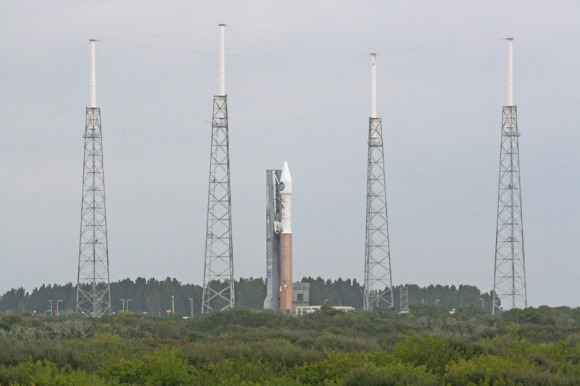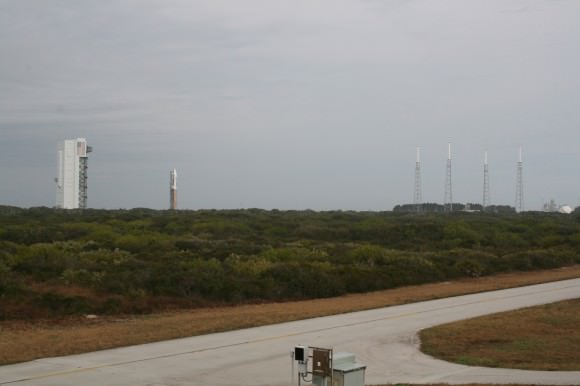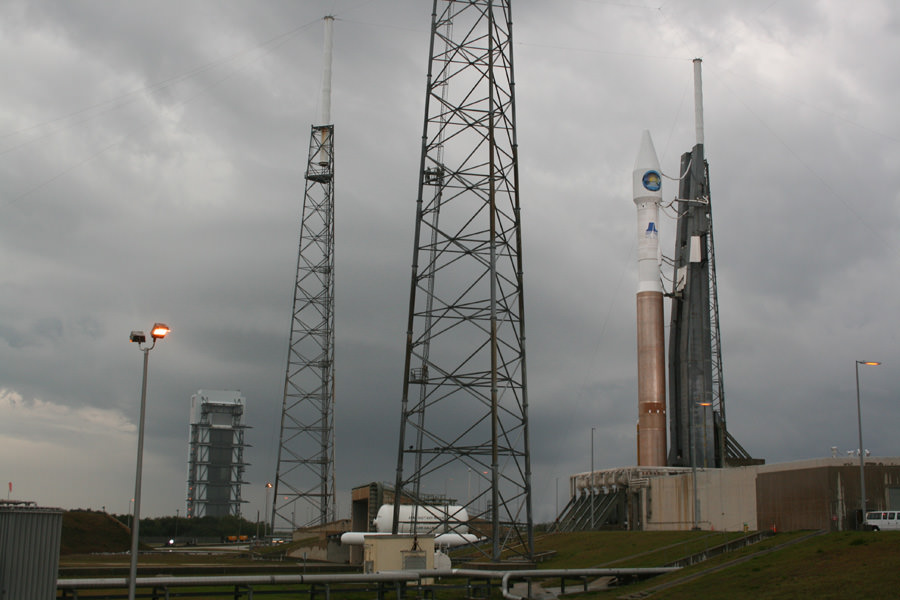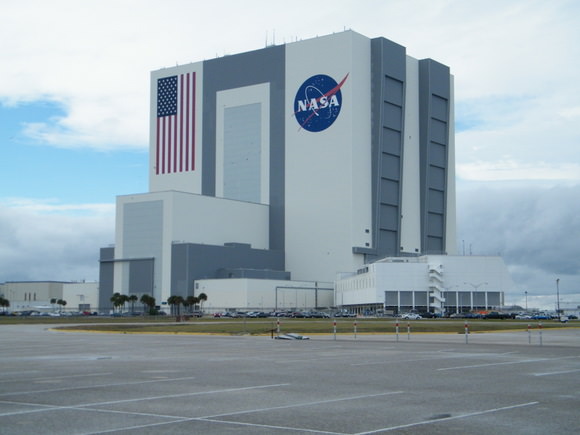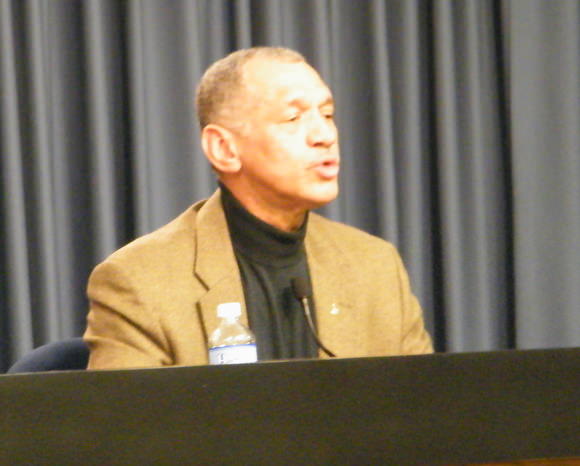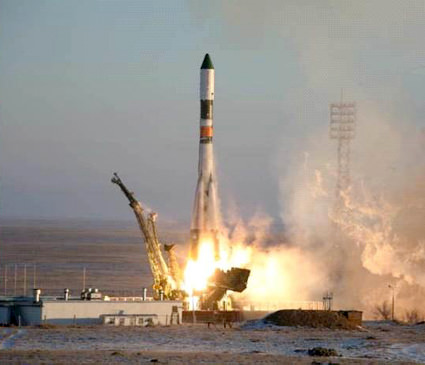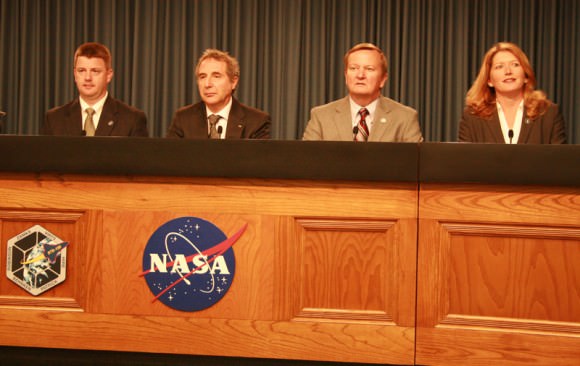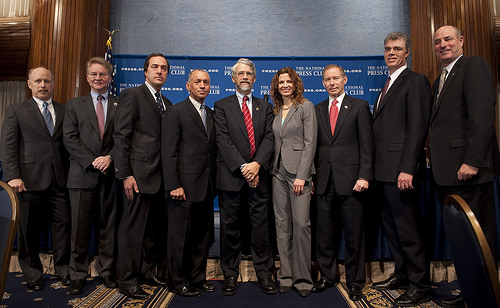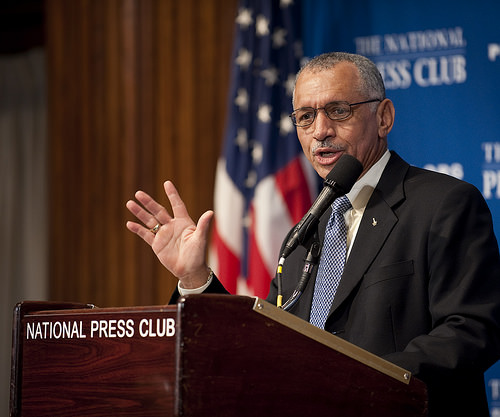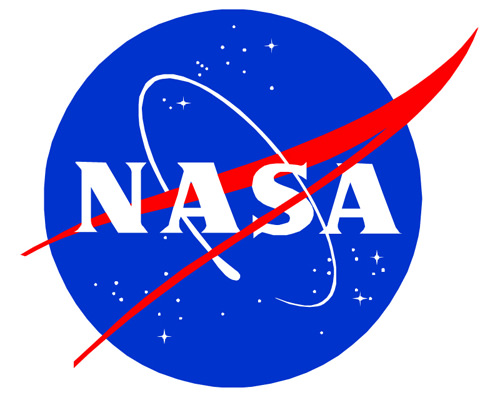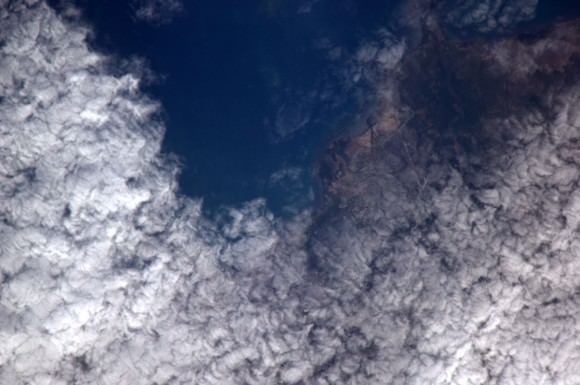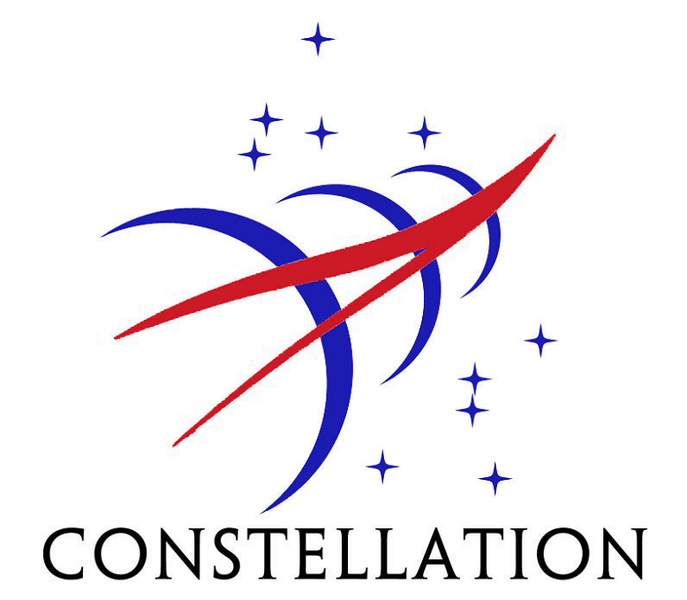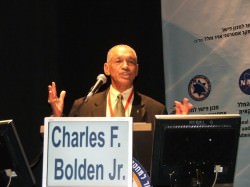[/caption]
(Editor’s Note: Ken Kremer is at the Kennedy Space Center for Universe Today covering the launch of SDO and Endeavour.)
NASA’s nearly $1 Billion hi tech sun probe, the Solar Dynamics Observatory or SDO, was rolled out today (Feb 9) to Launch Pad 41 on a rainy day here in Florida at 1 day from blast off. SDO will be carried aloft atop an Atlas V rocket at 10:26 AM EST on Feb 10 at Cape Canaveral Air Force Station. The launch window extends for 1 hour. The current weather prediction is only 40% “GO”. The primary concerns for launch day are ground winds with gusts and thick clouds.
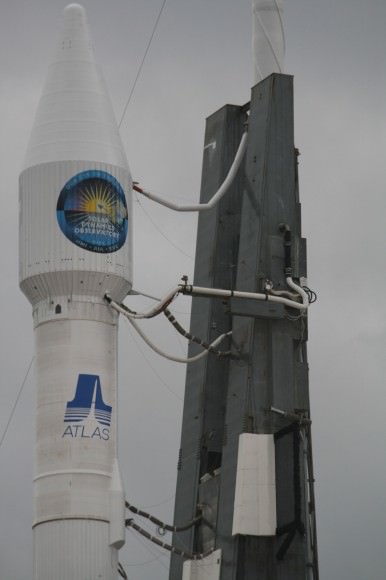
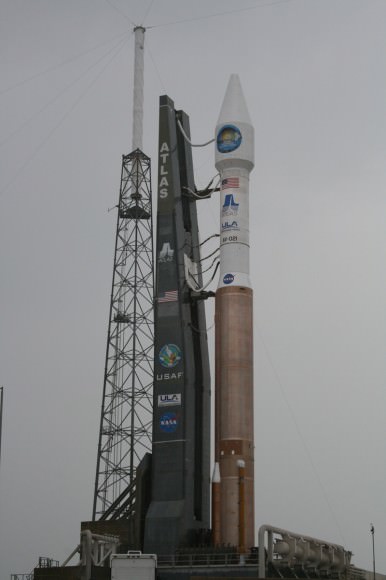
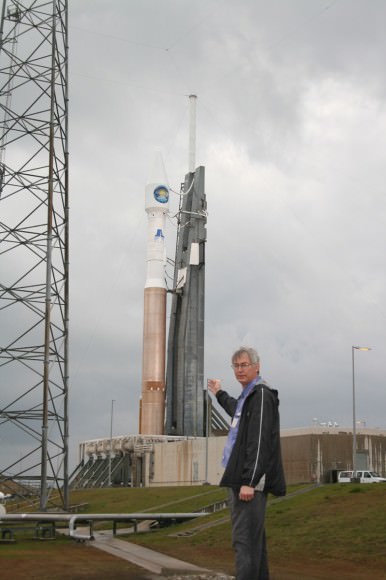
SDO project scientist Dean Pesnell told me in an interview today that “SDO will acquire movies of the entire surface of the Sun on a 24/7 basis with 10 times greater resolution than High Definition. That’s about equivalent in size to an IMAX movie”. The three science instruments will collect a staggering 1.5 terabytes of data per day which is equivalent to downloading 500,000 songs. The data will be beamed back continuously to two dedicated ground stations in New Mexico which were specially constructed for SDO. There are no on board recorders due to the huge volume of data.
“It’s perfect timing to launch and study the sun as it starts the rise to a solar maximum,” according to Pesnell. “The sun patiently waited for us to be ready to launch as we waited for a launch opportunity. After a long period of inactivity, Sun spots recently started appearing at the North Pole. And they also just started at the South Pole”.
“SDO was conceived by the scientists around 1996 and formally approved by NASA in 2002”, Prof. Phillip Scherrer said to me. He is the Principal Investigator for the Helioseismic and Magnetic Imager (HMI) instrument.
“The primary mission phase will last 5 years and hopefully extend out to 10 and perhaps even longer. The longevity depends on the health of the science instruments. Remember SOHO was projected to last 2 years and has now operated for over 15 years ! “
HMI will study the origin of solar variability and attempt to characterize and understand the Sun’s interior and magnetic activity.
Both HMI, and the Atmospheric Imaging Assembly, or AIA, will allow scientists to see the entire disc of the sun in very high resolution — 4,096 by 4,096 mm CCDs. In comparison, a standard digital camera uses a 7.176 by 5.329 mm CCD sensor.
AIA also will image the outer layer of the sun’s atmosphere, while the Extreme ultraviolet Variability Experiment, or EVE, measures its ultraviolet spectrum every 10 seconds, 24 hours a day.
We are now less than 12 hours from launch of SDO, NASA’s “New Eye on the Sun”.
Read my earlier SDO reports, including from on site at the KSC launch pads for both SDO and STS 130.
NASA’s Solar Crown Jewel Bolted atop Atlas Rocket
NASA advanced Solar Observatory nearing February launch; will send IMAX like movies daily
Learn more at the NASA SDO Website
See a cool new video explaining SDO here:
The Solar Dynamics Observatory in 3.5 Minutes
